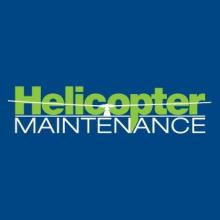Drone Scents - Safety
Although the main theme of Drone Scents is sUAS maintenance, it is always underscored by safety. Although the following is not addressing maintenance, it is speaking to the UAS and helicopters safely sharing the National Airspace. Despite the fact the UAS and Helicopter operations, differ in their flight profiles they must coexist within the “vertical lift community” with safety as a common goal. As can be expected the UAS / eVTOL as a recent entrant, is stretching into airborne convenience services such as small package delivery; private drug prescription delivery; property evaluation…etc. The entertainment / sports production has totally embraced the sUAS. Peaceful coexisting is also being stretched as you will see.
I have extracted an excerpt of the email sent by Christopher Martino, Senior Director of Operations and Internal Affairs for the Helicopter Association Intl. (HAI). Mr. Martino sent this to the HAI working groups’ leadership requesting the information be shared with our working group members for consideration and comment. As chairman of the Technical and Maintenance Working Group, I was one of several addressees to receive this email.
The following is Mr. Martino’s email:
“Within the following narrative you will find a copy of a recently released (FAA/DoT) docket to the Federal Register. In it, the FAA is asking for public comment to help inform their efforts to develop regulations related to beyond visual line of sight operations for UAS.
We won’t go through the entire scope of the input they’ve requested but want to bring to your attention a potential threat to the safety of some of your operations.
I call your attention to Paragraph G.
In this section they ask for public input to the concept of “Shielded Operations” and under what circumstances they should be allowed. You’ll also notice that the FAA references the recommendations that came from the Beyond Visual Line of Sight Aviation Rulemaking Committee (BVLOS ARC). https://www.faa.gov/regulations_policies/rulemaking/committees/documents...
To fully appreciate the threat to low altitude operations we need to review what the BVLOS ARC report recommends in terms of “Shielded Operations.”
Here is a fundamental layout of what low altitude helicopter operators would need to deal with IF the BVLOS ARC’s “Shielded Operations” recommendations go through as suggested:
A “Shielded Operation” would be considered any operation of an unmanned system in an area as defined “as a volume of airspace that includes 100’ above the vertical extent of an obstacle or critical infrastructure and is within 100 feet of the lateral extent of the same obstacle or critical infrastructure as defined in 42 U.S.C. § 5195c. A Shielded Operation is an operation within a Shielded Area.” (BVLOS ARC Final Report)
This means unmanned aircraft would be able to conduct “shielded operations” freely within 100’ vertically or horizontally of anything that can be categorized as either “critical infrastructure” OR if defined as an “Obstacle” (iaw 14 CFR Part 77) in the airspace.
“Obstacles:” IAW the ARC report, an “obstacle” would be “Any object of natural growth, terrain, or permanent or temporary construction or alteration, including equipment or materials used and any permanent or temporary apparatus. [14 CFR Part 77, “Subpart C - Standards for Determining Obstructions to Air Navigation or Navigational Aids or Facilities, § 77.13 Applicability”]”
“Critical Infrastructure:” IAW the Cyber Security and Infrastructure Security Agency (CISA), there are 16 Critical Infrastructure Sectors:
i. Chemical Sector
ii. Commercial Facilities Sector
iii. Communications Sector
iv. Critical Manufacturing Sector
v. Dams Sector
vi. Defense Industrial Base Sector
vii. Emergency Services Sector
viii. Energy Sector
ix. Financial Services Sector
x. Food and Agriculture Sector
xi. Government Facilities Sector
xii. Healthcare & Public Health Sector
xiii. Information Technology Sector
xiv. Nuclear Reactors, Materials, and Waste Sector
xv. Transportation Systems Sector
xvi. Water and Wastewater Sector
When you consider the full scope of what is being proposed, it becomes quickly apparent that we are pretty much talking about the entire NAS. Buildings, waterways, powerlines, pipelines, highways, towers, farmers’ fields, natural features, etc., etc., could all be in the “shielded operations” areas.
As an Association, we certainly support the inclusion of unmanned systems into the airspace. Many of you are already working to integrate these new aircraft into your inventories and we’re helping you get there. We all agree, however, the integration of UAS into the airspace must be done safely.
So why the discussion on “Shielded Operations?”
Because, along with the ARC recommendation that “Shielded Operations” be established comes the recommendation that all manned aircraft shall give Right of Way to UAS in these areas. Regardless of what you are doing, how you are equipped or if you can even see the UAS…you would have the responsibility to give way.
Think about it…
- A UPAC aircraft conducting HEC on a utility line would have to give way to a UAS delivering pizza.
- An Aerial Firefighting aircraft dipping its bucket would have to give way to a UAS taking photos.
- An air ambulance landing on a highway would have to give way to a UAS moving merchandise for a department store.
The recommendations from the report are unrealistic and are a very real hazard to safety of flight.
The FAA requested that public input on the issues be submitted not later than 14 June.
The period is unjustifiably short, so HAI and 9 other industry associations have requested the comment period be extended. Whether the FAA authorizes an extension is not yet known.
HAI, along with other industry members, will be providing comments to the FAA on the issues in the attachment. Not all are directly impactful to your operations, but the one highlighted above absolutely is. As such, we wanted you and your working groups to be aware…..”

